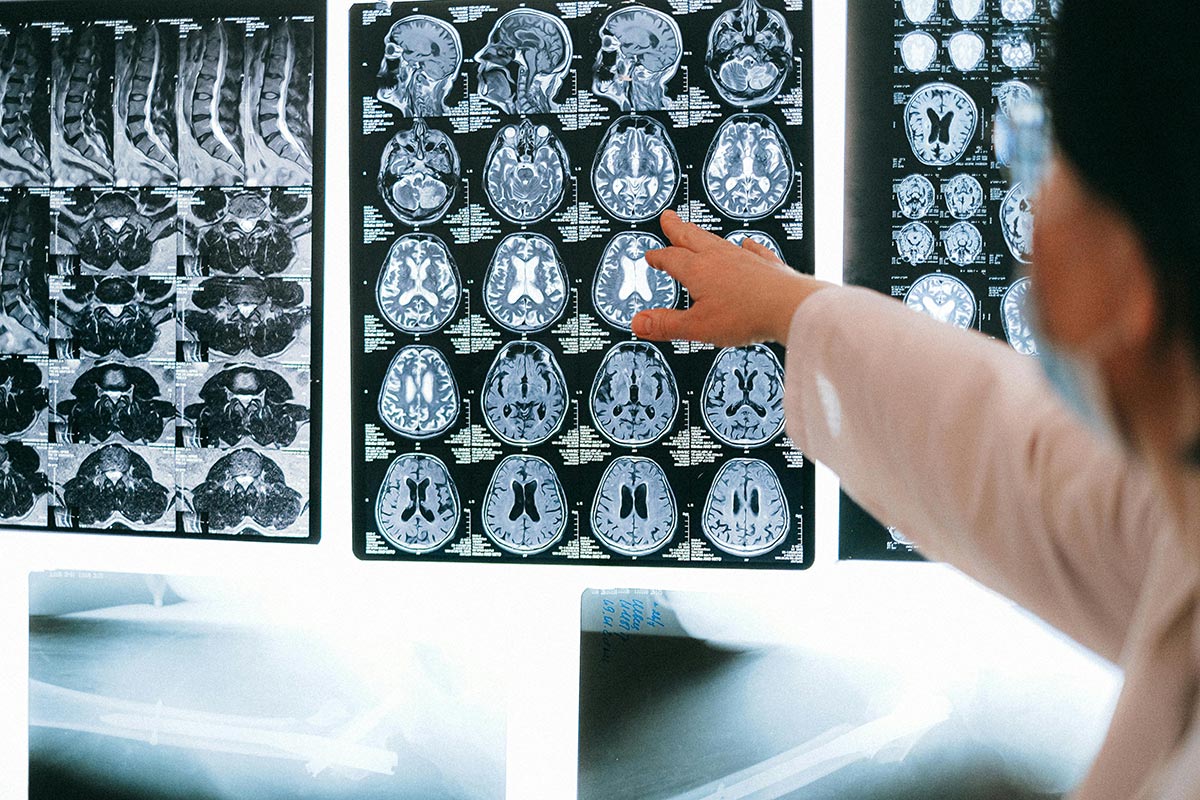
Understanding the Potential Funding Avenues
Legalizing alcohol has far-reaching impacts, especially when considered as a source of funding for treatment programs aimed at alcohol use disorder (AUD). By transforming regulatory limitations into taxation opportunities and wisely directing these funds, stakeholders can make a significant dent in public health challenges related to substance misuse. This exploration delves into various facets of alcohol legalization and its potential to support treatment initiatives.
Government Support in Alcohol Treatment Services

What government support is available for alcohol treatment programs?
Government support for alcohol treatment programs is primarily provided through the Substance Abuse and Mental Health Services Administration (SAMHSA). This agency offers invaluable resources, including a comprehensive list of local recovery services to support individuals seeking help for alcohol use disorders. Over the years, significant federal funding has been allocated to enhance the accessibility and affordability of treatment services for those in need.
Medicare and Medicaid also play crucial roles in assisting with alcohol treatment. Medicaid, which covers low-income families, and Medicare, which is available to individuals aged 65 and older or disabled, provide varying levels of alcohol treatment assistance. However, coverage details can differ from state to state, impacting how individuals access treatment services.
Additionally, the Veterans Administration (VA) extends specialized treatment options for veterans struggling with alcohol addiction. The VA's programs are designed to be flexible and accommodating, with dedicated resources to address concurrent issues, such as PTSD, which can complicate alcohol use disorders.
Under the Affordable Care Act (ACA), mental health and addiction treatments, including those for alcohol use disorders, are classified as essential health benefits. This classification has significantly increased coverage options, ensuring that more individuals can access the necessary services to support their recovery journey.
Overview of Funding Mechanisms for Alcohol Treatment
| Source | Program Details | Impact |
|---|---|---|
| SAMHSA | Provides funding for treatment and prevention programs | Increased accessibility of recovery services |
| Medicare/Medicaid | Covers treatment for low-income and elderly individuals | Varying access based on state coverage details |
| Veterans Administration | Specialized treatment for veterans with flexible scheduling | Enhanced support for veterans and associated issues |
| Affordable Care Act | Mandates mental health and addiction treatment coverage | Expanded access to essential health benefits for all seekers |
These combined efforts reflect a comprehensive system of support aimed at addressing the significant public health challenge posed by alcohol use disorders in America.
Economic Implications of Alcohol Legalization on Reservations

What are the implications of alcohol legalization on Native American reservations regarding treatment and prevention funding?
The implications of alcohol legalization on Native American reservations regarding treatment and prevention funding can be significant. Legalization may lead to an increase in alcohol consumption, potentially exacerbating existing challenges related to Alcohol Use Disorder (AUD) within these communities.
Consequently, there could be a greater demand for treatment resources, including access to FDA-approved medications such as Acamprosate, Disulfiram, and Naltrexone. These medications are specifically designed to support individuals in managing AUD effectively. This increase in need emphasizes the importance of comprehensive treatment programs that not only provide medication but also integrate counseling and behavioral therapies.
Another vital factor to consider is community funding. If reservations generate revenue from alcohol sales, this income could be earmarked for developing robust treatment and prevention programs. However, if the generated funds are insufficient, it might pose challenges in addressing the rising demand for treatment services.
What about potential increases in treatment needs?
As reservations legalize alcohol, the potential for increased treatment needs becomes a pressing reality. With higher alcohol availability, rates of alcohol-related issues may spike, leading to more significant community health challenges. It’s essential that reservations prepare for this by enhancing existing treatment facilities and hiring qualified staff to manage the anticipated rise in substance use disorders.
How can communities balance cultural sensitivities with economic benefits?
Balancing cultural sensitivities with economic benefits is crucial in this context. Some tribes may view the regulation of alcohol as a way to reclaim control over their practices and establish a regulatory framework that aligns with their cultural values. Others might worry about the normalization of alcohol use and its potential to compromise traditional recovery methods.
Stakeholder collaboration, including input from tribal leaders and healthcare providers, will be essential in developing policies that honor cultural perspectives while also leveraging economic opportunities for funding treatment and prevention initiatives. This systemic approach may ultimately address both the financial and health-related challenges posed by alcohol consumption in these communities.
The Role of Alcohol Taxation in Treatment Funding

How does alcohol taxation affect funding for treatment programs?
Alcohol taxation can play a significant role in funding treatment programs for substance use disorders by generating revenue that can be allocated to these initiatives. These funds can support the purchase and administration of FDA-approved medications that are crucial for effective treatment of Alcohol Use Disorder (AUD), such as acamprosate, disulfiram, and naltrexone.
The combination of medication and counseling, as emphasized in treatment guidelines, enhances the recovery potential of individuals. This approach not only helps those struggling with alcohol addiction but also addresses the pressing need for comprehensive behavioral treatment support.
A portion of the tax revenue could be directed towards expanding access and resources for opioid use disorder treatment, including medications like buprenorphine and methadone. Effective alcohol taxation may lead to improved treatment outcomes, ensuring that necessary resources and regulatory oversight are available.
Public support for tax allocation to treatment
Public sentiment is increasingly in favor of using alcohol tax revenues for addiction treatment services. Polls indicate overwhelming support in states like California, where 81% of respondents favor raising alcohol taxes specifically to fund addiction programs. In Oregon, a proposal aimed at increasing beer taxes has shown a similar trend, with 61% backing.
This significant public support underscores a recognition of the need to both fund treatment initiatives and tackle the broader societal costs associated with alcohol misuse.
State legislative initiatives
Many states are actively considering and implementing measures to raise alcohol taxes to finance addiction treatment. An increasing number of state legislatures are aligning their budget proposals with public health objectives by endorsing higher alcohol taxation.
For example, California, New York, and Massachusetts have all shown bipartisan support for utilizing increased alcohol taxes to address budget deficits while expanding addiction treatment access. At present, ten states allocate a portion of their alcohol tax revenues directly to addiction treatment programs, including New Jersey and Oregon.
This legislative shift reflects an evolving understanding of how financial mechanisms can be leveraged to address public health challenges effectively.
FDA-Approved Treatments for Alcohol Use Disorder

Which medications are approved by the FDA for the treatment of alcoholism?
The FDA has approved several medications specifically targeting Alcohol Use Disorder (AUD). Among the most notable are:
Acamprosate: This medication helps individuals maintain abstinence from alcohol. It is usually prescribed after five to eight days of abstinence, taken three times daily. Acamprosate works by regulating the balance of neurotransmitters disrupted by alcohol use.
Disulfiram: Suitable for individuals who are already abstinent, Disulfiram creates unpleasant reactions when alcohol is consumed, which deters individuals from drinking. It's crucial for individuals to understand the potential side effects associated with alcohol intake while on this medication.
Naltrexone: This medication blocks the pleasurable effects of alcohol and reduces cravings. By interfering with the brain's reward system, it supports individuals in ongoing treatment, minimizing the chances of relapse.
Combination of medication with therapy
Research suggests that using these medications in conjunction with counseling and behavioral therapies significantly enhances their effectiveness. This combination addresses both the physiological aspects of addiction and the psychological behaviors associated with alcohol use.
Access to treatment strategies
Access to these FDA-approved medications varies. Individuals seeking treatment for AUD can explore options available through their healthcare providers, community health centers, or through programs supported by organizations like SAMHSA. It's vital to engage in a comprehensive treatment plan that considers personal circumstances and encourages long-term recovery.
Research and Policy Development by NIAAA
Which agency is responsible for research on alcohol use disorder treatment?
The National Institute on Alcohol Abuse and Alcoholism (NIAAA) is the primary agency responsible for research on alcohol use disorder (AUD) in the U.S. It oversees extensive research addressing the causes, consequences, prevention, and treatment of AUD, positioning itself as a key player in the fight against alcohol-related issues.
Focus on AUD research
NIAAA focuses on advancing knowledge through various initiatives that promote the development of effective strategies for treating and preventing AUD. The agency conducts and funds research studies that explore a range of themes, including effective treatment modalities, the impact of alcohol on mental health, and community-level interventions.
Guidelines for ethical conduct in studies
To ensure the integrity of its research protocols, NIAAA establishes clear guidelines through its advisory boards. These guidelines cover the ethical conduct of studies involving alcohol, emphasizing the necessity of informed consent and special considerations for vulnerable populations. Researchers must follow these ethical standards rigorously to uphold the rights and well-being of participants.
Data and Safety Monitoring Plans
NIAAA also mandates the implementation of Data and Safety Monitoring Plans (DSMP) for all clinical trials. These plans are crucial for ensuring participant safety and maintaining adherence to established research protocols. By closely monitoring data and safety throughout the study, NIAAA aims to prevent any adverse effects associated with alcohol administration and ensure ethical compliance in all research activities.
| Aspect | Details | Importance |
|---|---|---|
| Responsible Agency | NIAAA | Focused on AUD prevention and treatment research |
| Ethical Guidelines | Requires informed consent and consideration for vulnerable groups | Ensures participant rights and safety |
| Monitoring Requirement | Mandates Data and Safety Monitoring Plans (DSMP) for clinical trials | Safeguards participant welfare and adherence to protocols |
Strategic Use of Alcohol Tax Revenues
Link between taxation and reduced consumption
Raising alcohol taxes is a proven strategy to reduce excessive consumption. Higher prices have been linked to lower alcohol use across various demographics, which in turn can decrease alcohol-related health issues and fatalities. By implementing excise taxes, states can not only curb harmful drinking behaviors but also create an essential funding stream for addiction treatment initiatives.
Case studies from states utilizing tax for treatment
Several states have taken active steps to allocate a portion of their alcohol tax revenues to addiction treatment services. For instance, New Jersey earmarked $22 million from its alcohol tax for a healthcare subsidy fund aimed at addiction support. Similarly, Oregon's proposal to raise beer taxes aligns proceeds directly towards addiction treatment and prevention, exemplifying a growing commitment to addressing alcohol misuse through fiscal strategies.
Voter support for tax increases dedicated to addiction services
Public opinion strongly favors the idea of raising alcohol taxes to fund addiction services. In California, a January poll revealed that 81% of voters supported higher alcohol taxes for funding addiction programs. Oregon also demonstrated considerable voter support (61%) for similar measures, underscoring the willingness of the community to back fiscal policies that can enhance treatment accessibility and support for those affected by alcohol addiction.
Community Engagement and Policy Implementation

The Role of Stakeholders in Policy Creation
Stakeholders such as tribal leaders, healthcare providers, and community organizations are essential in the development of alcohol-related policies on Native American reservations. Their diverse perspectives and experiences help shape comprehensive strategies aimed at addressing alcohol use and addiction issues. This collaborative approach ensures that policies are culturally sensitive and tailored to the unique needs of each community.
Strategies for Effective Engagement
Effective community engagement involves proactive communication, educational outreach, and fostering partnerships among involved parties. Key strategies include:
- Educational Programs: Informing community members about the potential benefits and risks of alcohol legalization and regulation.
- Community Support Initiatives: Encouraging local involvement in treatment and prevention dialogues facilitates ownership of initiatives.
- Policy Development Workshops: Engaging stakeholders in workshops enhances participation and builds consensus around best practices for addressing alcohol use.
Balancing Traditional Methods with Modern Strategies
Many tribes balance traditional recovery practices with modern treatment approaches. Some communities prioritize strategies that do not involve alcohol sales, focusing instead on culturally rooted methods for addiction recovery. Others view regulated alcohol sales as a means of revenue that could fund essential treatments and prevention programs. This balance requires open discussions to ensure that all voices are heard in the decision-making process.
Harnessing Alcohol Legalization for Positive Outcomes
The facilitation of effective treatment services through revenues generated from alcohol legalization presents a viable opportunity to address alcohol-related public health challenges. It requires a multi-faceted approach involving taxation, regulatory frameworks, and collaborative strategies with community leaders, health professionals, and policymakers. While concerns about potential negative impacts should not be overlooked, the structured investment in treatment services presents a pathway towards sustainable health improvements and societal benefits.
References
- How Legalizing Alcohol On Reservations Impacts Treatment ...
- Legalizing Alcohol on Native American Reservation to Fund ...
- PAR-25-241: Tobacco, Alcohol, and Cannabis Policy Research for ...
- Biden-Harris Administration Announces $28 Million in Funding ...
- Government Treatment for Alcoholism
- Utilizing SAMHSA Grants for Substance Use Treatment
- Portal for Federal Underage Drinking Prevention Resources
- SAFER - alcohol control initiative - World Health Organization (WHO)
- Laws and Regulations for Substance Abuse & Mental Health Services
.svg)





